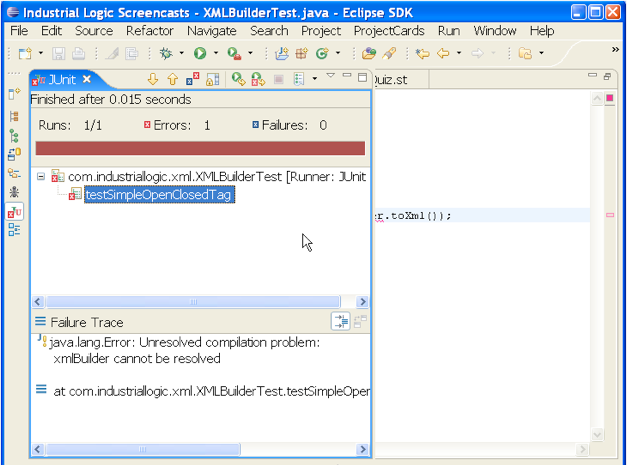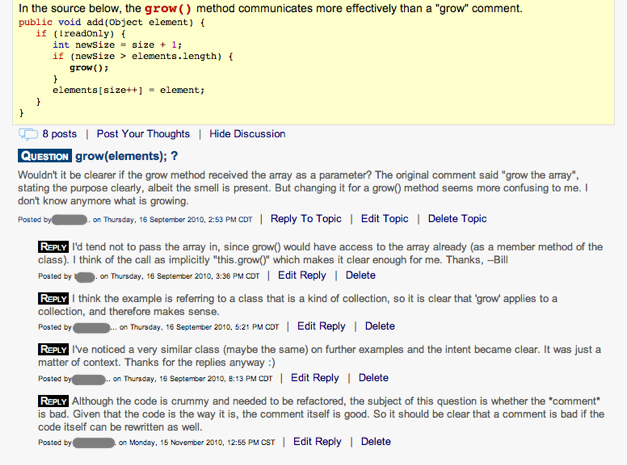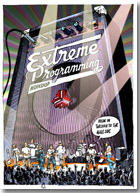This album starts by looking at the concept of systems and how an external perspective helps create the best
stories. You'll learn the Role-Action-Context template, ten criteria for effective stories, and ideas for
kick-starting story-writing when you feel stuck. You'll explore a variety of ways to split and simplify stories
to help you ensure that your release is as valuable as it can be. You'll get a job aid to remind you of the key
ways to split stories.
Highlights

Effective Storytelling: Learn the agile way to compose effective user stories.
Learn more...
Compose Valuable User Stories

Learn the simple, effective Role-Action-Context template, a collection of criteria for composing effective stories, and ideas for kick-starting story-writing when you feel stuck.
Learn ways to split and simplify stories to help you iterate faster and release sooner.

Expert Videos: Learn tools & techniques by watching short videos from industry experts.
Learn more...
Watch Short, Engaging Videos by Experts

Watch our experts efficiently explain models, demonstrate tools and solve exercises.
Like a good pop song, every video we make holds your attention and gets you into a better development rhythm.

Integrated Forums: Ask questions, get expert replies and read fascinating discussions.
Learn more...
Engage in a Global Forum

No other eLearning system on the planet matches our discussion forums, woven throughout every album.
Ask questions, get expert replies, read and weigh in on fascinating discussion threads from a global audience.
Includes
- 2-4 hours of content
- 171 pages
- 25 interactive quizzes
- 7 videos
- 2 Exercises
- Story-splitting catalog
Contents
|
You Are Here
|
3
|
|
What’s in a Charter?
|
4
|
|
Systems and Boundaries
|
5
|
|
What's the Boundary?
|
6
|
|
What Are User Stories?
|
7
|
|
Ambiguity
|
8
|
|
An Example Story
|
9
|
|
You’re Kidding Me!
|
10
|
|
Basic Story Structure
|
11
|
|
The Heading: Role-Action-Context
|
12
|
|
A Good Heading is Concise
|
13
|
|
Which Are Good Headings?
|
14
|
|
Other Story Formats
|
15
|
|
The Details
|
16
|
|
When Do We Get the Details?
← Click to Preview
|
17
|
|
My Project Isn’t Greenfield
|
18
|
|
Some Details Are Needed Sooner
← Click to Preview
|
19
|
|
Card, Conversation, Confirmation
|
20
|
|
Summary
|
21
|
|
Introduction
|
35
|
|
Essential Stories
|
36
|
|
What About Developer Needs?
|
37
|
|
External Stories
|
38
|
|
External Stories Quiz
|
39
|
|
External Stories Example
|
40
|
|
Instantaneous Stories
|
41
|
|
Instantaneous Stories Quiz
|
42
|
|
Detectable Stories
|
43
|
|
Can You Hear Me Now?
|
44
|
|
The Four Criteria and Role-Action-Context
|
45
|
|
Summary
|
46
|
|
Writing Stories
← Click to Preview
|
48
|
|
Getting Started
← Click to Preview
|
49
|
|
An Approach to Storytelling
|
50
|
|
More Ways to Find Stories
|
51
|
|
Where Do You Get Ideas?
|
52
|
|
Lay Out the Overall Shape of the System
|
53
|
|
“Perfect” Technology
|
54
|
|
Real Technology Outside
|
55
|
|
Feeling Stuck?
|
56
|
|
Write Some Stories
|
57
|
|
Assess Your Answer
|
58
|
|
One Solution
|
59
|
|
Summary
|
60
|
|
Users and Roles
|
69
|
|
What Are Roles?
|
70
|
|
Example Roles
|
71
|
|
Search Widely for Roles
|
72
|
|
Practice: Brainstorm Some Roles
|
73
|
|
Characteristics of Users
|
74
|
|
Primary or Secondary?
|
75
|
|
Favored or Disfavored?
|
76
|
|
Oft-Forgotten Roles
|
77
|
|
Dig Deeper: Simple Personas
|
78
|
|
Adjectives: A Powerful Tool
|
79
|
|
General to Specific
|
80
|
|
Beat the System
|
81
|
|
Humans Only?
|
82
|
|
Summary
|
83
|
|
Why Measure Qualities?
|
85
|
|
Quality: Be Specific
|
86
|
|
Usability Example: Simple Attributes
|
87
|
|
An Informal Approach
|
88
|
|
Planguage: A More Formal Approach
|
89
|
|
Planguage Tags
|
90
|
|
Where do Targets Come From?
|
91
|
|
Which Elements Are Which?
|
92
|
|
How Formal Should We Be?
|
93
|
|
The Overall Process
|
94
|
|
Where to Track Quality Attributes?
|
95
|
|
Where are the Details?
|
97
|
|
Process Mapping: Follow the Object
|
98
|
|
Watch the People
|
99
|
|
Remembrance of Things Past
|
100
|
|
A Process Mapping Exercise
|
101
|
|
Sketch the Interface
|
102
|
|
A Sketch Exercise
|
103
|
|
Storytesting
|
104
|
|
Don’t Dial Every Number
|
105
|
|
Rule Tests
|
106
|
|
That Seems Too Easy!
|
107
|
|
Workflow Tests
|
108
|
|
Structure of Workflow Tests
|
109
|
|
A Workflow Test Exercise
|
110
|
|
Storytests Aren't Exhaustive
|
111
|
|
Storytests Can Be Hard to Create
|
112
|
|
Summary
|
113
|
|
Splitting Unlocks Value
|
115
|
|
Splitting for Value
|
116
|
|
Why Split?
|
117
|
|
Big Stories
|
118
|
|
Feature Fat
← Click to Preview
|
119
|
|
Fat Ain't All Bad!
|
120
|
|
Bargain Hunting
|
121
|
|
Merging Stories
|
122
|
|
Tracking Split Stories
|
123
|
|
Dimensions for Splitting
|
124
|
|
Avoid Technical Splits
|
125
|
|
A Real-Life Example: DotNetInvoice
|
126
|
|
High-Level Splits
|
128
|
|
Research First
|
129
|
|
Types of Research
|
130
|
|
How Would You Split This?
|
131
|
|
Manual Labor
|
132
|
|
Build or Buy?
|
133
|
|
Defer Roles and Stories
|
134
|
|
Defer
|
135
|
|
Walking Skeleton
|
136
|
|
Which Approach?
|
137
|
|
You Try!
|
138
|
|
Summary - High-Level Splits
|
139
|
|
Bring 'Em On!
|
141
|
|
'Ilities'
|
142
|
|
How Would You Split?
|
143
|
|
Start Static
|
144
|
|
Simplify Persistence
|
145
|
|
Lower Fidelity
|
146
|
|
Lower Reliability
|
147
|
|
What Would You Do?
|
148
|
|
Improve Performance Iteratively
|
149
|
|
Ilities Quiz
|
150
|
|
User Experience
|
152
|
|
Batch It Up
|
153
|
|
Single-User
|
154
|
|
API First
|
155
|
|
Simplified User Interface Style
|
156
|
|
Generic User Interface
|
157
|
|
User Interface Splitting Survey
|
158
|
|
Behavioral Complexity
|
160
|
|
Happy Path First
|
161
|
|
Where Is the Happy Path?
|
162
|
|
Many-1-0
← Click to Preview
|
163
|
|
Base Cases First
|
164
|
|
Data Diet
|
165
|
|
How Do You Simplify Behavior?
|
166
|
|
You Try!
|
167
|
|
Splitting Stories - Summary
|
168
|
|
Congratulations!
|
170
|
|
What's Next?
|
171
|
Highlights

Effective Storytelling: Learn the agile way to compose effective user stories.
Learn more...
Compose Valuable User Stories

Learn the simple, effective Role-Action-Context template, a collection of criteria for composing effective stories, and ideas for kick-starting story-writing when you feel stuck.
Learn ways to split and simplify stories to help you iterate faster and release sooner.

Expert Videos: Learn tools & techniques by watching short videos from industry experts.
Learn more...
Watch Short, Engaging Videos by Experts

Watch our experts efficiently explain models, demonstrate tools and solve exercises.
Like a good pop song, every video we make holds your attention and gets you into a better development rhythm.

Integrated Forums: Ask questions, get expert replies and read fascinating discussions.
Learn more...
Engage in a Global Forum

No other eLearning system on the planet matches our discussion forums, woven throughout every album.
Ask questions, get expert replies, read and weigh in on fascinating discussion threads from a global audience.
Includes
- 2-4 hours of content
- 171 pages
- 25 interactive quizzes
- 7 videos
- 2 Exercises
- Story-splitting catalog
Contents
|
You Are Here
|
3
|
|
What’s in a Charter?
|
4
|
|
Systems and Boundaries
|
5
|
|
What's the Boundary?
|
6
|
|
What Are User Stories?
|
7
|
|
Ambiguity
|
8
|
|
An Example Story
|
9
|
|
You’re Kidding Me!
|
10
|
|
Basic Story Structure
|
11
|
|
The Heading: Role-Action-Context
|
12
|
|
A Good Heading is Concise
|
13
|
|
Which Are Good Headings?
|
14
|
|
Other Story Formats
|
15
|
|
The Details
|
16
|
|
When Do We Get the Details?
← Click to Preview
|
17
|
|
My Project Isn’t Greenfield
|
18
|
|
Some Details Are Needed Sooner
← Click to Preview
|
19
|
|
Card, Conversation, Confirmation
|
20
|
|
Summary
|
21
|
|
Introduction
|
35
|
|
Essential Stories
|
36
|
|
What About Developer Needs?
|
37
|
|
External Stories
|
38
|
|
External Stories Quiz
|
39
|
|
External Stories Example
|
40
|
|
Instantaneous Stories
|
41
|
|
Instantaneous Stories Quiz
|
42
|
|
Detectable Stories
|
43
|
|
Can You Hear Me Now?
|
44
|
|
The Four Criteria and Role-Action-Context
|
45
|
|
Summary
|
46
|
|
Writing Stories
← Click to Preview
|
48
|
|
Getting Started
← Click to Preview
|
49
|
|
An Approach to Storytelling
|
50
|
|
More Ways to Find Stories
|
51
|
|
Where Do You Get Ideas?
|
52
|
|
Lay Out the Overall Shape of the System
|
53
|
|
“Perfect” Technology
|
54
|
|
Real Technology Outside
|
55
|
|
Feeling Stuck?
|
56
|
|
Write Some Stories
|
57
|
|
Assess Your Answer
|
58
|
|
One Solution
|
59
|
|
Summary
|
60
|
|
Users and Roles
|
69
|
|
What Are Roles?
|
70
|
|
Example Roles
|
71
|
|
Search Widely for Roles
|
72
|
|
Practice: Brainstorm Some Roles
|
73
|
|
Characteristics of Users
|
74
|
|
Primary or Secondary?
|
75
|
|
Favored or Disfavored?
|
76
|
|
Oft-Forgotten Roles
|
77
|
|
Dig Deeper: Simple Personas
|
78
|
|
Adjectives: A Powerful Tool
|
79
|
|
General to Specific
|
80
|
|
Beat the System
|
81
|
|
Humans Only?
|
82
|
|
Summary
|
83
|
|
Why Measure Qualities?
|
85
|
|
Quality: Be Specific
|
86
|
|
Usability Example: Simple Attributes
|
87
|
|
An Informal Approach
|
88
|
|
Planguage: A More Formal Approach
|
89
|
|
Planguage Tags
|
90
|
|
Where do Targets Come From?
|
91
|
|
Which Elements Are Which?
|
92
|
|
How Formal Should We Be?
|
93
|
|
The Overall Process
|
94
|
|
Where to Track Quality Attributes?
|
95
|
|
Where are the Details?
|
97
|
|
Process Mapping: Follow the Object
|
98
|
|
Watch the People
|
99
|
|
Remembrance of Things Past
|
100
|
|
A Process Mapping Exercise
|
101
|
|
Sketch the Interface
|
102
|
|
A Sketch Exercise
|
103
|
|
Storytesting
|
104
|
|
Don’t Dial Every Number
|
105
|
|
Rule Tests
|
106
|
|
That Seems Too Easy!
|
107
|
|
Workflow Tests
|
108
|
|
Structure of Workflow Tests
|
109
|
|
A Workflow Test Exercise
|
110
|
|
Storytests Aren't Exhaustive
|
111
|
|
Storytests Can Be Hard to Create
|
112
|
|
Summary
|
113
|
|
Splitting Unlocks Value
|
115
|
|
Splitting for Value
|
116
|
|
Why Split?
|
117
|
|
Big Stories
|
118
|
|
Feature Fat
← Click to Preview
|
119
|
|
Fat Ain't All Bad!
|
120
|
|
Bargain Hunting
|
121
|
|
Merging Stories
|
122
|
|
Tracking Split Stories
|
123
|
|
Dimensions for Splitting
|
124
|
|
Avoid Technical Splits
|
125
|
|
A Real-Life Example: DotNetInvoice
|
126
|
|
High-Level Splits
|
128
|
|
Research First
|
129
|
|
Types of Research
|
130
|
|
How Would You Split This?
|
131
|
|
Manual Labor
|
132
|
|
Build or Buy?
|
133
|
|
Defer Roles and Stories
|
134
|
|
Defer
|
135
|
|
Walking Skeleton
|
136
|
|
Which Approach?
|
137
|
|
You Try!
|
138
|
|
Summary - High-Level Splits
|
139
|
|
Bring 'Em On!
|
141
|
|
'Ilities'
|
142
|
|
How Would You Split?
|
143
|
|
Start Static
|
144
|
|
Simplify Persistence
|
145
|
|
Lower Fidelity
|
146
|
|
Lower Reliability
|
147
|
|
What Would You Do?
|
148
|
|
Improve Performance Iteratively
|
149
|
|
Ilities Quiz
|
150
|
|
User Experience
|
152
|
|
Batch It Up
|
153
|
|
Single-User
|
154
|
|
API First
|
155
|
|
Simplified User Interface Style
|
156
|
|
Generic User Interface
|
157
|
|
User Interface Splitting Survey
|
158
|
|
Behavioral Complexity
|
160
|
|
Happy Path First
|
161
|
|
Where Is the Happy Path?
|
162
|
|
Many-1-0
← Click to Preview
|
163
|
|
Base Cases First
|
164
|
|
Data Diet
|
165
|
|
How Do You Simplify Behavior?
|
166
|
|
You Try!
|
167
|
|
Splitting Stories - Summary
|
168
|
|
Congratulations!
|
170
|
|
What's Next?
|
171
|
Volume Licensing
Volume Licensing
In today's competitive environment, Industrial Logic aims to meet the needs of business customers not only by delivering world-class eLearning but also by providing a high degree of flexibility. Whether your organization is a startup, small- or medium-size business, or a large global enterprise, you benefit as a corporate customer from significant discounts.
Benefits
-
Volume pricing discounts. It's simple: the more you purchase, the more you save.
-
Custom catalogs. Define your custom catalog of albums and/or box sets that your staff can subscribe to.
-
One-on-one support. You get a dedicated Account Manager; choose the optimal program to meet your organization's specific needs.
-
Timely support. Expert coaches are available to answer your challenging questions within 1 to 2 business days. To foster a community of enthusiastic eLearners, we welcome and encourage user feedback.
-
Streamlined procurement process. With a single purchasing contract, you can avoid departmental budget constraints, differing purchasing procedures, and other administrative hurdles.
-
Flexible payment options. We offer flexible payment for qualified customers.
-
Unlimited lifetime license. Your students' licenses will not expire, providing continuous access to an effective, ever-improving learning tool.
Industrial Logic will tailor our volume licensing agreement to meet the needs of your specific organization, whether you consolidate your organization's purchases into one comprehensive transaction or spread your purchases out over a scheduled period of time. The more you order, the greater your savings.
To speak to a dedicated Account Manager today, please contact us.











